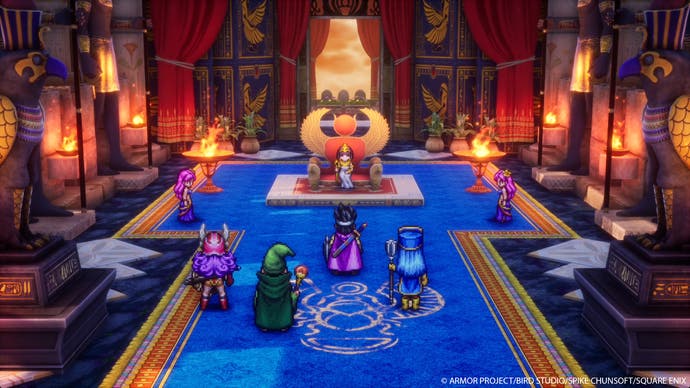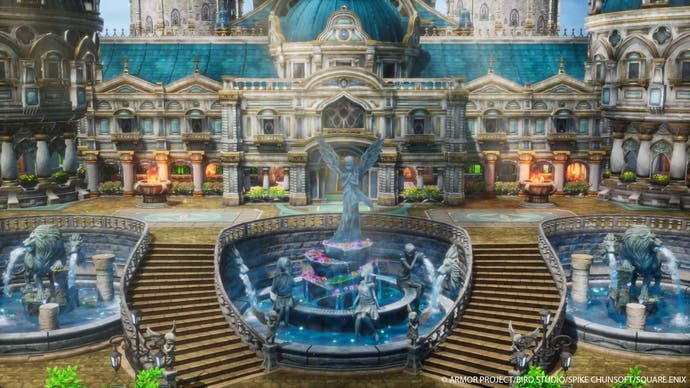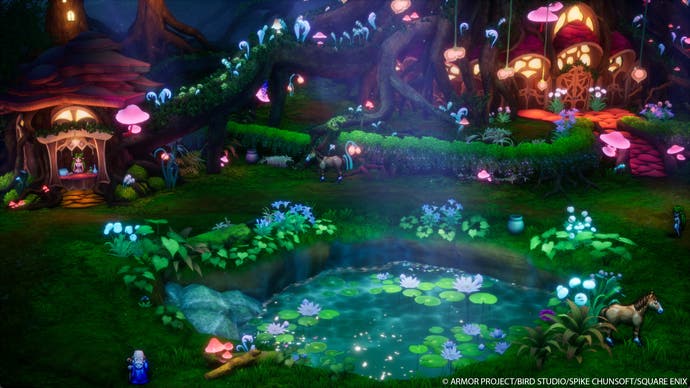Dragon Quest 3 HD-2D is the excuse I need to properly play this iconic series
Slimy yet satisfying.
Firstly, a confession: despite being a huge Final Fantasy fan, and fan of the genre overall, I've never played a Dragon Quest game - much to my shame. The first Dragon Quest (released in 1986) is the original, pioneering JRPG and the success of the series is a huge reason why the genre is so popular. But so far, it's passed me by.
I admit this not to reveal my shortcomings, but to say I am absolutely the target market for Square Enix's forthcoming HD-2D remake of Dragon Quest 3. As with much of the series, it's seen numerous re-releases since but isn't available across all modern consoles besides mobile ports and Switch. But now it's making a triumphant return using the graphical style popularised by Octopath Traveler and will arrive on Switch, PS5, Xbox Series X/S and PC in November.
So why start with the third in the series I hear you ask? Dragon Quest 3 originally released in 1988 (I was one year old!), but is chronologically the first. Together with the previous two games, they form the Erdrick Trilogy. As such, this is a great entry point into the series for those of us wishing to catch up.
And yes, as announced at today's Nintendo Direct, Square Enix has similar remakes of the first two games on the way to complete the trilogy.
This is a faithful remake of the original, then, with plot and battles mostly unchanged beyond an expanded story under the direction of original designer Yuji Horii. Yet there are now plenty of modern touches to ensure it's palatable for newcomers. I was able to go hands-on with a preview build to check out the changes for myself and see why this series - that's collectively sold 88m units worldwide - is so cherished.
I was dropped a little way into the game in the castle town of Aliahan where the game begins. I pottered about, chatting to the townsfolk, finding coins and herbs in hidden spots, and buying some new gear - all typical stuff. The HD-2D style is bright and colourful, retaining the charm of the original sprites but with far more detail in the background. Characters were designed by Akira Toriyama and remain just as cheerful here, but with exuberant environments that together feel like a pop-up fantasy book.
Exiting to the world map is perhaps the biggest visual change: the camera is pitched lower than in the original, giving more of a proper 3D feel than top-down. The world is more expansive this way, and the original's day-night cycle offers shifting lighting and hues.

As a point of comparison, I've been playing the Final Fantasy pixel remasters recently and one of the most impenetrable elements of games from the era is simply knowing where to go. It's far too easy to lose the thread of a quest and wander in circles attempting to find that one character to speak to, all the while getting swamped by random battles interrupting exploration.
Pleasingly, here the frequency of random battles was far lower than I anticipated and little grinding was needed. More to the point, this remake includes an optional objective marker that highlights where to progress with a big yellow circle. It'll keep newcomers on the right path, but is also ignorable (or removable) for anyone wanting a more retro experience.
That's one of many updates to the game. Other changes include adjustable battle speed, autosaves (as well as the ability to save at churches as with more recent games), character heals on level up, and modifiable tactics for all characters in battle. In fact, the whole game can be played with auto-battle on, if you choose.


Perhaps the biggest upgrade, besides the visuals, is the music. The score has been entirely re-recorded by the Tokyo Metropolitan Symphony and it's glorious, lending a warm and grand sense of adventure. Certain important dialogue lines are voiced, too. In a welcome retro touch, though, sound effects throughout the game - including the iconic battle success fanfare - are the same chimes as the original.
Where the remake remains a little antiquated is in battle. This is classic turn-based forward-facing battling, with enemies presented to you in cute sprites, minimal effects, and text-based narration. Seeing the characters or having more elaborate animations - something akin to Dragon Quest 11 - would modernise the game further, though I suspect purists will state this wouldn't feel like Dragon Quest as a result. It's clear, though, battles are where the developers drew the line for change.
As a result, this Dragon Quest 3 remake is a balance of old and new that remains firmly in retro territory, but with tasteful touches to smoothen out the experience. Square Enix has produced plenty of these types of remakes and, if anything, it's surprising it's taken so long for Dragon Quest to get its due. But I'm thankful it's happening at last: this is bound to be the ideal way to experience these classics.


